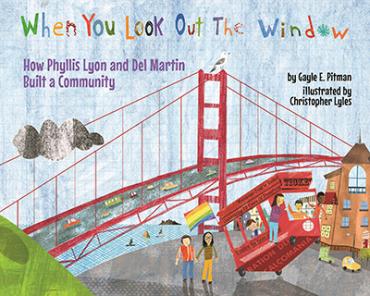SHE PERSISTED: 13 AMERICAN WOMEN WHO CHANGED THE WORLD
On that infamous night in February, when Senate Republicans silenced Sen. Elizabeth Warren as she spoke critically of Jeff Sessions, then the attorney general nominee, Senate Majority Leader Mitch McConnell defended the move. “Sen. Warren was giving a lengthy speech,” he said. “She had appeared to violate the rule. She was warned. She was given an explanation. Nevertheless, she persisted.”
Warren’s defiance and McConnell’s rebuke—nevertheless, she persisted—immediately set off a fire storm on social media and became a rallying cry emblazoned on bumper stickers, T-shirts, and yard signs. Soon after, the sentence also became the title of a children’s book, She Persisted: 13 American Women Who Changed the World (Philomel Books).
Written by Chelsea Clinton and illustrated by Alexandra Boiger, the book would make a helpful addition to the classrooms of educators looking to supplement their lessons on current events and American history for children ages 4–8. From the first page, in language that young children can easily understand, the book acknowledges that society still expects women to act a certain (read: subservient) way. “Sometimes being a girl isn’t easy,” Clinton writes. “At some point, someone probably will tell you no, will tell you to be quiet and may even tell you your dreams are impossible. Don’t listen to them. These thirteen American women certainly did not take no for an answer. They persisted.”
These sentences are printed above a beautifully illustrated drawing of a diverse group of children wandering the halls of a museum lined with portraits of famous women, some of whom are mentioned in the pages that follow. A painting of Maria Tallchief, a dancer of Native American heritage, standing with her arms gracefully in the air, hangs between portraits of Ruby Bridges and Sally Ride. The book devotes two pages to each woman’s powerful example of persistence with a short description of the challenges they overcame. For instance, the book recounts how Bridges was 6 years old when she integrated an all-white elementary school in New Orleans, and it tells how Ride became the first American woman to fly into space.
While Elizabeth Warren herself is not one of the 13 subjects, Clinton notes in the dedication that the senator did in fact inspire the book. And in another nod to Warren’s actions on the Senate floor, the illustration on the opening page includes a bust of Coretta Scott King; after all, it was King’s 1986 letter describing Sessions’s abysmal civil rights record that Warren was reading when her male colleagues interrupted her.
It’s also worth noting that on this page, steps from King’s bust, hangs a portrait of a woman wearing a red pantsuit. That woman, not mentioned in the book, has also inspired a generation of women and girls to persist. Her name is Hillary Clinton.
WHEN YOU LOOK OUT THE WINDOW: HOW PHYLLIS LYON AND DEL MARTIN BUILT A COMMUNITY
There’s nothing like a children’s book to teach students about our shared humanity regardless of religion, race, gender, or sexual identity. For educators seeking resources on lesbian, gay, bisexual, transgender, and queer/questioning (LGBTQ) history, When You Look Out the Window: How Phyllis Lyon and Del Martin Built a Community (Magination Press), written by Gayle E. Pitman and illustrated by Christopher Lyles, is more than a heartwarming story—it’s an effective teaching tool.
The book, geared toward children ages 4–8, recounts the lives of “one of San Francisco’s most well-known and politically active lesbian couples.” Lyon and Martin met in 1950, when LGBTQ people faced even more hostility and prejudice from the larger society than they do now.
The book, in which Pitman writes as Lyon and Martin with one voice, begins with an illustration of the couple overlooking the Golden Gate Bridge. The first pages explain that the two friends fell in love and then bought a house where they enjoyed looking out the windows at their beautiful city. But, at the time, San Francisco was an unwelcoming place for gays and lesbians. “We saw empty, quiet streets,” Pitman writes. “Doors tightly shut. So many women who didn’t have rights.” Images of scared and angry people fill the next few pages, showing the hostility and fear directed toward those who were gay. On the following page, though, the sun begins to shine, with the rest of the book depicting the positive changes that Lyon and Martin worked so hard to achieve. Colorful images of smiling people at various San Francisco landmarks, such as City Hall, the Moscone Convention Center, the LGBT Community Center, and the Castro District, as well as rainbow flags flying high, show a more inclusive city.
Pitman, a professor of psychology and women’s studies at Sacramento City College, has included in the book a note to parents, caregivers, and educators explaining that although there is greater acceptance of LGBTQ individuals in our society today, “many students have never learned anything about LGBTQ history.” It’s important for them to do so, Pitman writes, so that children who identify as LGBTQ can see themselves represented in history and literature. It’s also crucial for children to read stories about people who are different from them so they can “develop the ability to step out of their own personal frame of reference, and view the world through a different lens.”


